 |
|
CRS-20 (Falcon 9) 6 March 2020 |
Space Launch Complex 40 Cape Canaveral Air Force Station |
SpaceX launched its twentieth Commercial Resupply Services mission (CRS-20) to the International Space Station (ISS) from Space Launch Complex 40 (SLC-40) at Cape Canaveral Air Force Station at 11:50 p.m. on 6 March 2020. The Dragon spacecraft for the CRS-20 mission previously supported the CRS-10 mission in February 2017 and the CRS-16 mission in December 2018, and the Falcon 9 first stage booster supporting this mission previously flew on the CRS-19 mission in December 2019. Following stage separation, the Falcon 9’s first stage landed on Landing Zone-1 (LZ-1) at Cape Canaveral Air Force Station a little over 8 minutes after launch. |
|
From the SpaceX press release: Dragon will be filled with approximately 4,500 pounds of supplies and payloads, including critical materials to directly support more than 250 science and research investigations that will occur onboard the orbiting laboratory. CRS-20 is the twentieth and final mission to the International Space Station that SpaceX will fly for NASA under the first Commercial Resupply Services (CRS) contract. In January 2016, NASA announced that SpaceX’s Falcon 9 launch vehicle and Dragon spacecraft were selected to resupply the space station through 2024 as part of a second CRS contract award. Under the CRS contracts, SpaceX has restored the United States’ capability to deliver and return significant amounts of cargo, including live plants and animals, to and from the orbiting laboratory. International Space Station crew members will use the station’s 57.7-foot (17.6- meter) robotic arm to capture Dragon and attach it to the orbiting laboratory on Monday, March 9. Dragon will return with more than 4,000 pounds of cargo after an approximately four-week stay at the space station. About five hours after Dragon leaves the space station, it will conduct its deorbit burn, which lasts up to 10 minutes. It takes about 30 minutes for Dragon to reenter the Earth’s atmosphere and splash down in the Pacific Ocean off the coast of Baja California. |
|
TIME EXPOSURE |
|
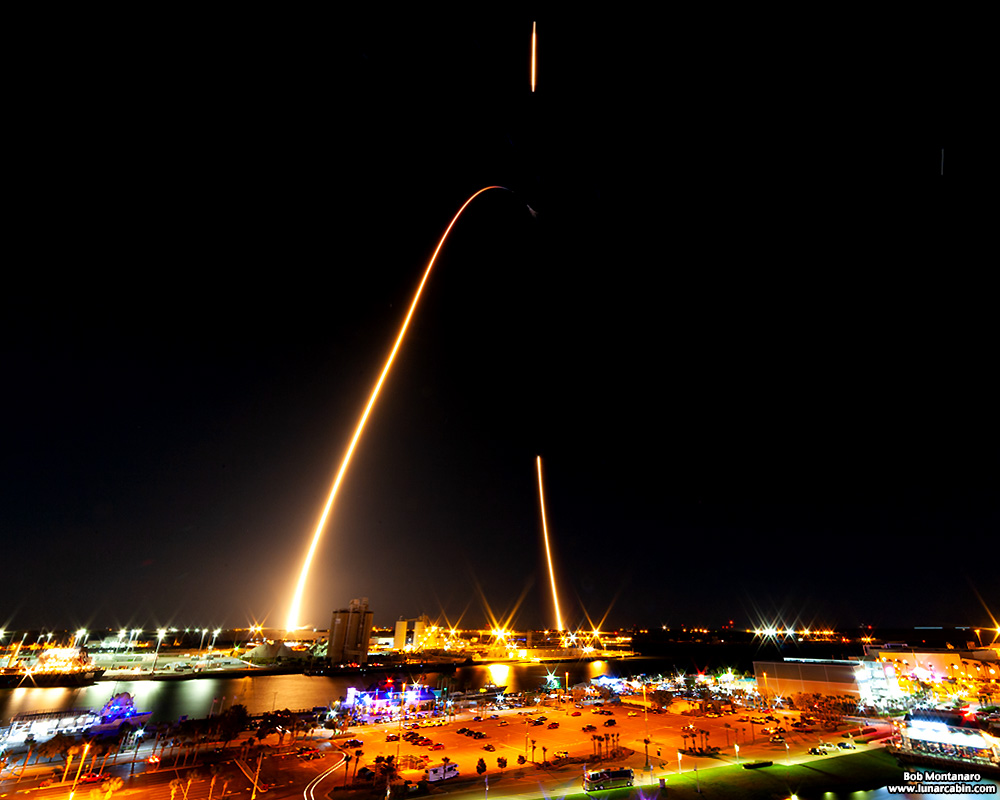 |
|
This time exposure shows the rocket launch at left and the entry burn, upper right, and landing, right, of the Falcon 9 first stage. |
|
LAUNCH |
|
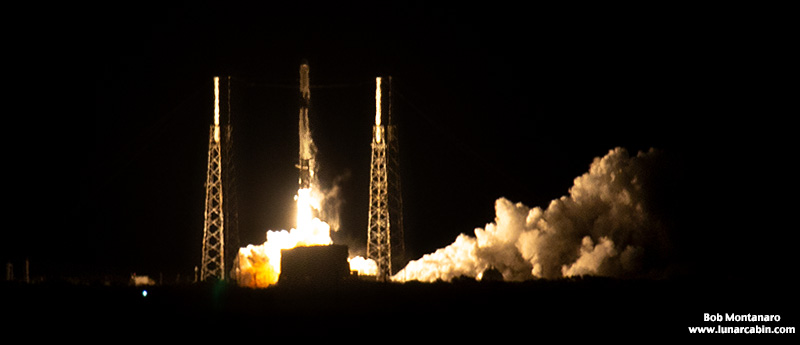 |
|
 |
|
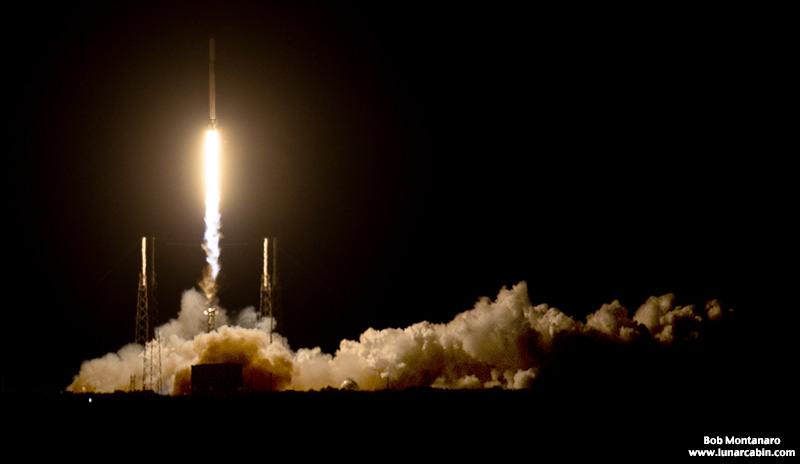 |
|
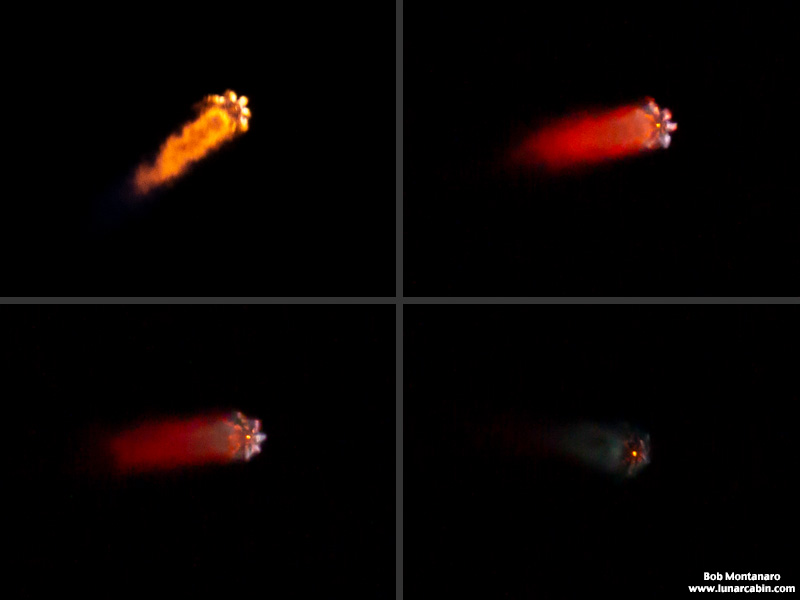 |
|
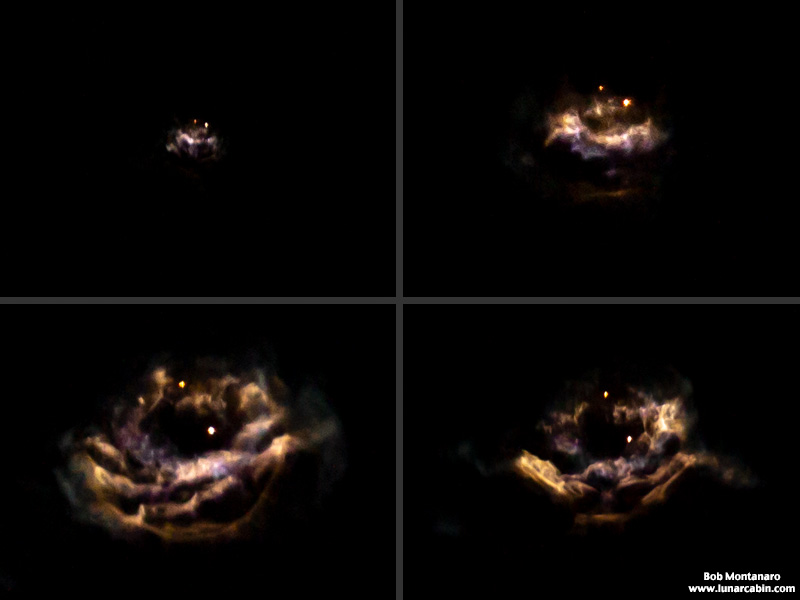 |
|
| The interacting exhaust clouds of the now separated first stage mix with the second stage powering away into orbit. The first stage is the bright upper dot beginning its maneuvers for landing while the lower bright dot is the second stage taking Dragon into orbit. | |
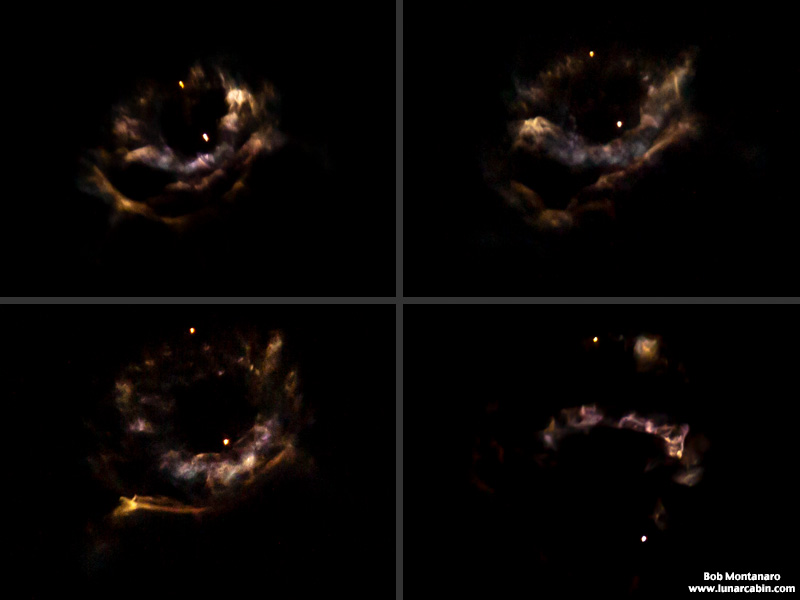 |
|
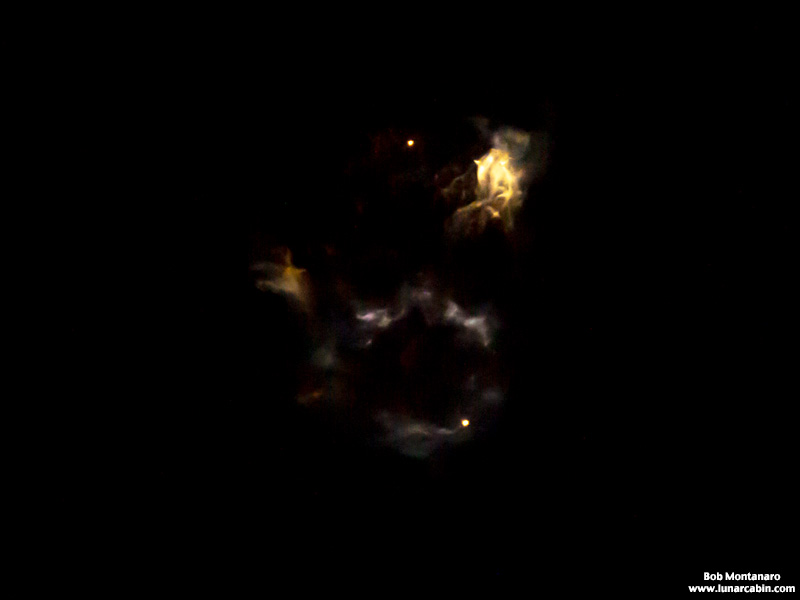 |
|
FALCON 9 FIRST STAGE LANDING |
|
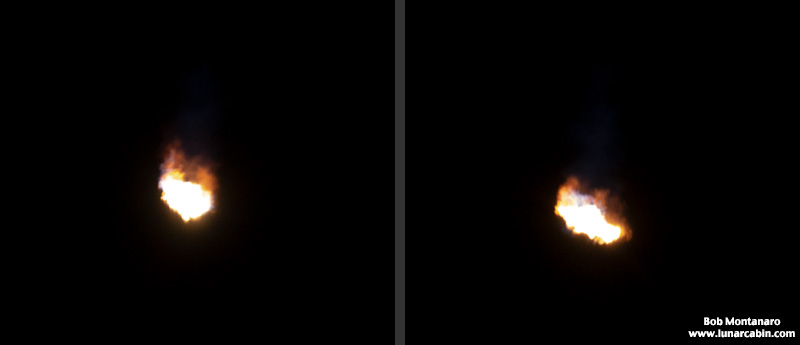 |
|
The first stage entry burn. |
|
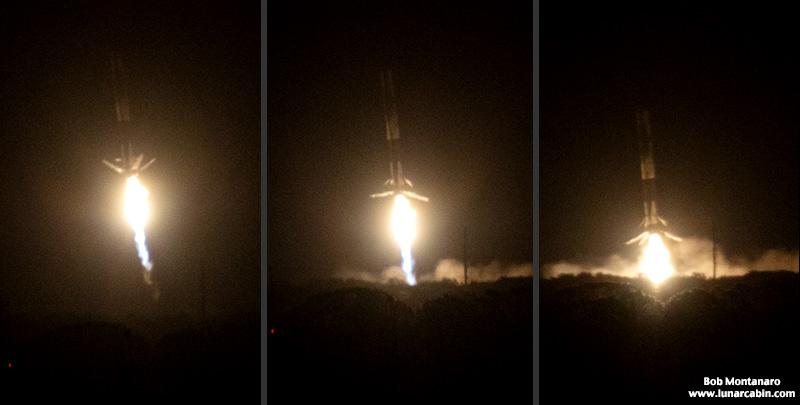 |
|
The landing legs deploy. |
|
 |
|
Touchdown at Landing Zone-1 at Cape Canaveral Air Force Station. |
|
All contents copyright Lunar Cabin |
|